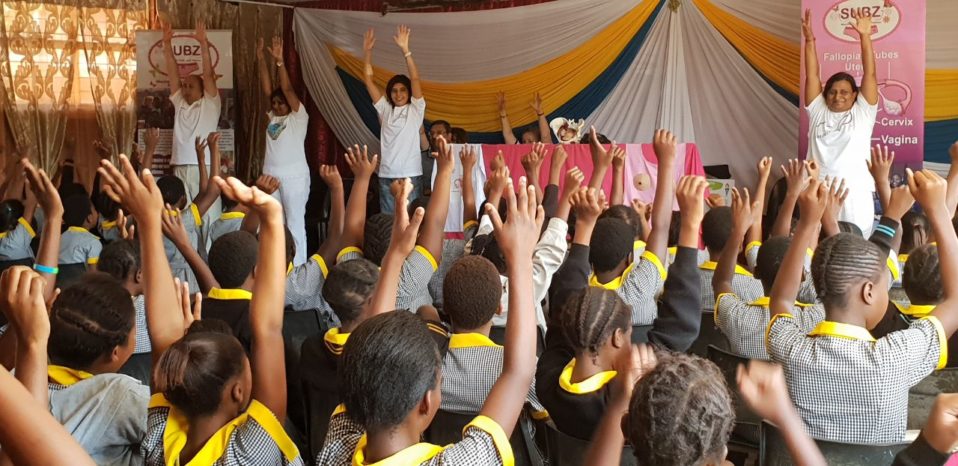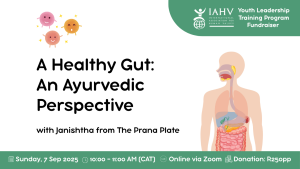There are approximately 9 million school going girls between the ages of 10 to 18. Research has shown that 25% of these girls miss school for at least one week per month, whilst they are menstruating. The reason for this being affordability, as they have no means to acquire sanitary towels. Family resources are allocated firstly for food. The shocking fact is that many of these girls do not wear underwear on a regular basis as they cannot afford it. Even when they are at school, they do not participate in sport while they have their monthly period.
Aims of the Project
- To address this undesirable situation and provide the means to minimise absenteeism and see the young women of our country empowered to flourish.
- To facilitate a platform for the acquisition and distribution of packs of sanitary pads, panties and sealable bags which will go much further than just the traditional solutions to this problem.
- We intend to engage the public to fund the project for the foreseeable future.
- Pilot in one school to be completed in 1st year. Then rolled out annually on an ongoing basis.
Objectives
- The project’s main objective is to support school girls by providing a solution to address the challenge they face in being absent from school.
- Providing guidance to living a healthy and hygienic way of life by providing some dignity through proper sanitary wear.
Proposed Solution
- We have decided to address the challenges faced by these girls by taking on the Comfort with Dignity initiative, creating and managing this project and inviting other stakeholders to participate.
- The schools and the community will be engaged.
- Funding will be obtained and a programme of Health Education and the distribution of sanitary wear will be rolled out.
- The Subz product and design that has been identified is one created by Sue Barnes
The Product Specifications
- The panty is 100% cotton therefore allowing the skin to breathe.
- The elastic is non-woven; rubber based and therefore will not stretch out of shape.
- The sanitary pad is layered, the outer being 100% cotton knit, waterproof, layers of hydrophilic fabric and the inner is made of a hydrophobic fabric.
- The sanitary pad is absorbent and will hold up to 25 – 30mls of discharge.
- The sanitary pad is fully washable, and therefore reusable.
- The panty and sanitary pad are made of 100% cotton fabric and will last up to 5 years.
- The pad contains no gels or absorbent chemicals and is thus totally biodegradable.
- It is a ‘green peace’ product, and being biodegradable will not clog landfills
The Packaging
Each pack costs R211.00/R316.00 including VAT and contains:
- 2/3 pairs of panties
- 6/9 washable pads
- 6/9 plastic sealable bags
- 1 Drawstring bag
- Sizes range from a girls age 10 through to a ladies XXXXL
The Approval
- SABS (South African Bureau of Standards) approval – 2532/C1/N197/R
- Patent lodged – 2011/06281
- Product endorsed by Obstetrician and Gynaecologist Dr Attwood-Smith
- Product endorsed by Pharmacist Anton Lawrenz
The Environmental Impact
The main toilet system in the rural areas is the pit toilet, or long drop. This is where most ladies dispose of their sanitary pads. This system works on natural bacteria breaking down the waste, so when sanitary pads are placed in the toilet, they block the toilets because decomposition cannot take place. This affects the toilet being in working order and is the main reason why there are very few, useable toilets in rural and township areas.
Used sanitary pads are also disposed of on waste dump areas which are also problematic due to their inability to decompose. This results in landfill areas filling up quicker than planned. Waste then gets dumped anywhere. Amongst the other obvious health and hygiene risks is the risk of the HIV virus being active in this waste.
In the working environment, toilets have ‘sani bins’ provided which are managed by cleaning companies and waste removal is under control. From private homes, used sanitary wear is discarded in the waste for removable by the municipality which is transferred to landfill areas. As previously stated, ladies sanitary wear is not biodegradable, and the sheer volume of discarded used sanitary wear causes a large landfill problem of its own.
The Results
The Subz product can go beyond the school girls as it has the potential to benefit any underprivileged menstruating woman in South Africa. It can even be used by the elderly with incontinence problems.
Restoration of Personal Dignity
- Improved self esteem
- Improved knowledge on personal hygiene
- Reduction in school / work absenteeism
- Improved school and work performance
- More participation in sports
- Ability to be “equal” in the job market
- Improvement of rural sanitation
- A lessening of the destruction of our environment
- Reduction in landfill overload
In alignment with the major goal of restoring dignity, and empowering young girls and women through basic healthcare, it is evident that this not merely a social issue, but also an environmental one. By engaging in such a project we would like to serve the social, educational, financial and environmental needs of our communities. In doing so, we can be sure that we are heading toward the creation of equal, empowered, healthy and dignified lifestyles for all.
Sue Barnes is an extraordinary woman who has inspired our mission to spread this vision. She has given hope to young girls. She has given them the opportunity to be free, to participate in daily activities, not to feel either ashamed or embarrassed, and she has empowered them – all with a sanitary pad. They have their dignity back, through her initiative, Project Dignity.






